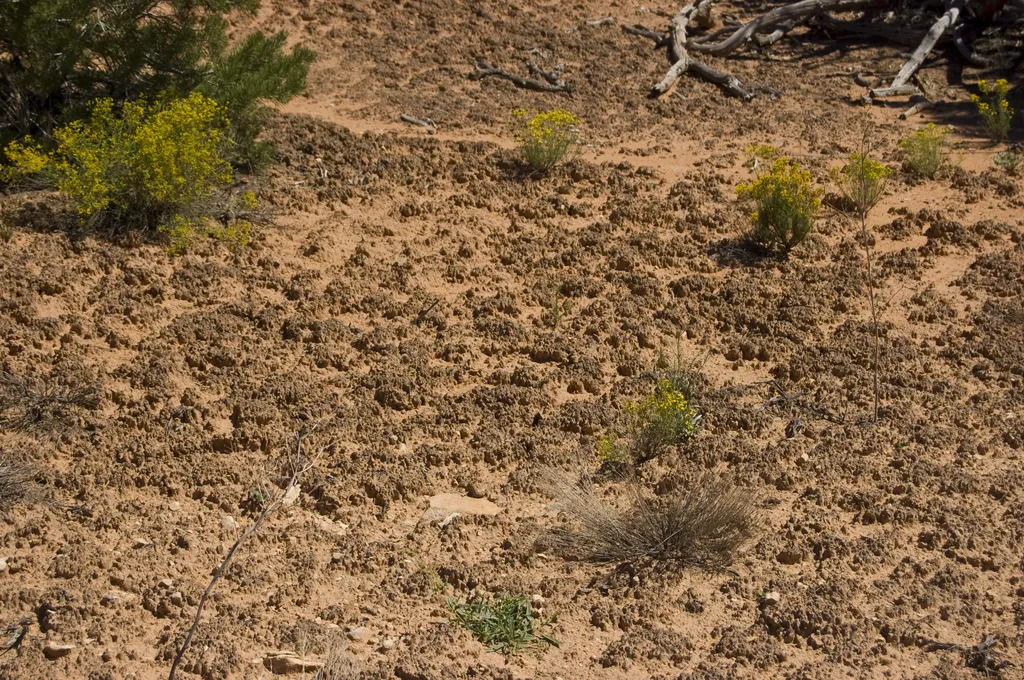In the heart of Spain’s arid landscapes, a team of researchers led by Carlotta Pagli from the Department of Agronomy at the University of Almería has uncovered a promising avenue for sustainable agriculture. Their work, published in the journal ‘Frontiers in Plant Science’ (translated as ‘Frontiers in Plant Science’), focuses on the untapped potential of biocrust microorganisms, specifically cyanobacteria and heterotrophic bacteria, to enhance plant growth in harsh, dryland conditions.
Biocrusts, the biological soil crusts that form on the surface of dryland soils, are a rich source of microorganisms that have adapted to thrive in extreme environments. These microorganisms possess unique plant growth-promoting (PGP) properties that could revolutionize agriculture in arid regions. “Drylands face multiple stresses, including high temperatures, drought, and salinity, which hinder plant establishment and growth,” explains Pagli. “Our research aims to harness the power of these resilient microorganisms to improve plant performance under such challenging conditions.”
The team isolated and screened various strains of cyanobacteria and heterotrophic bacteria from biocrusts in arid soils. Among the cyanobacteria, Nostoc commune CANT2, isolated from the province of Almería, exhibited the highest number of PGP properties. This strain, along with N. commune AB55 and Trichocoleus cf. desertorum CAU7, showed remarkable capabilities, including phosphate and potassium solubilization, nitrogen fixation, and the production of growth-promoting hormones like auxins.
The heterotrophic bacteria strains identified as Peribacillus frigoritolerans and Bacillus atrophaeus also demonstrated significant PGP traits. When applied to wheat seeds (Triticum aestivum) in biopriming experiments, the combination of N. commune CANT2 and P. frigoritolerans 1E enhanced vigor indices by up to 58% compared to the control. “These findings highlight the potential of combined microbial consortia with PGP activities as candidates for the development of biostimulants,” Pagli notes.
The implications of this research extend beyond agriculture. In the energy sector, the development of sustainable biostimulants could reduce the reliance on chemical fertilizers, lowering production costs and environmental impact. As the world grapples with climate change and the need for sustainable practices, the use of biocrust microorganisms offers a promising solution to improve plant growth and resilience in dryland agriculture.
This study opens new doors for future research and commercial applications. By exploring the vast diversity of biocrust microorganisms, scientists can develop innovative strategies to enhance agricultural productivity and ecological restoration. The work of Pagli and her team not only sheds light on the potential of these microorganisms but also paves the way for a more sustainable and resilient future in agriculture and beyond.

